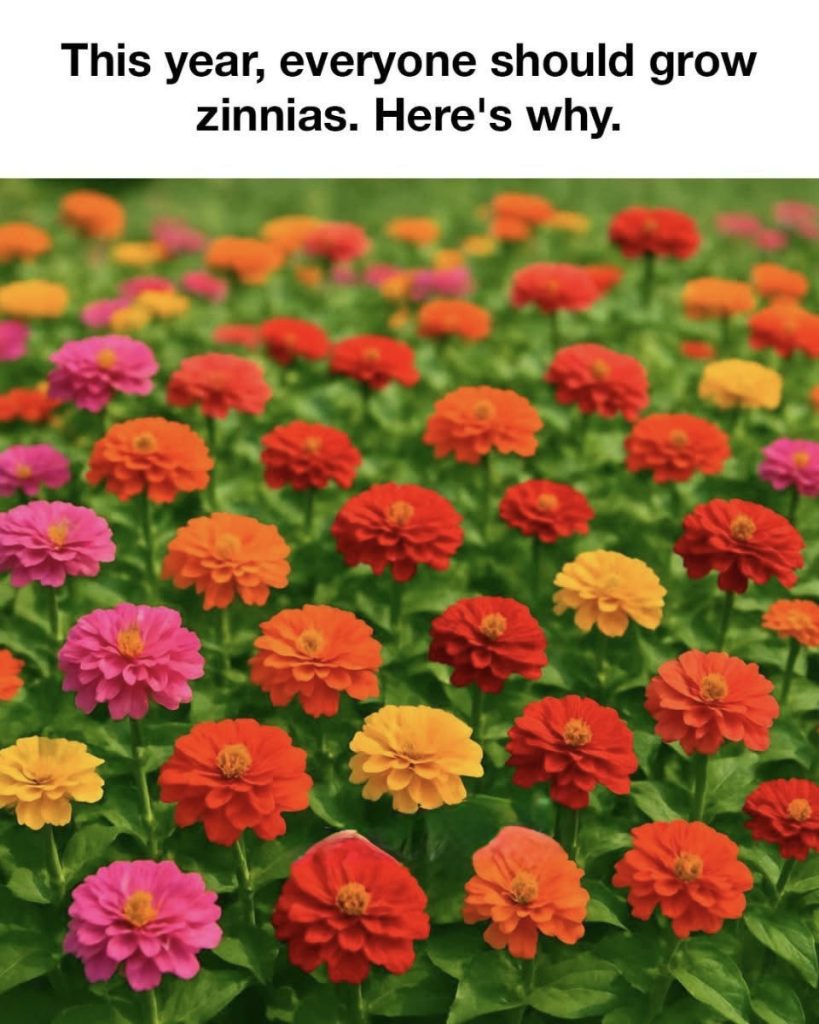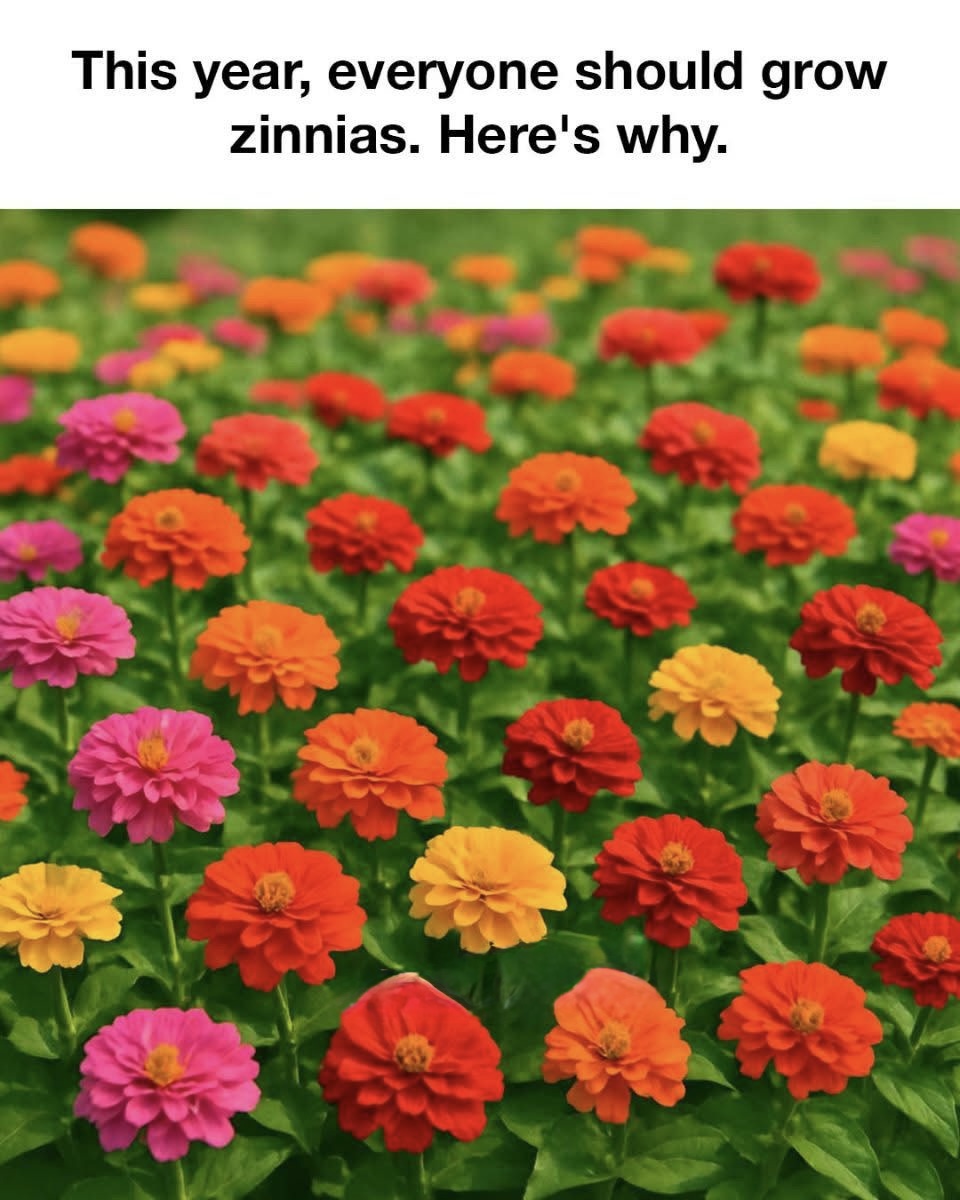
Zinnias are a gardener’s delight, known for their vibrant colors and ease of cultivation. These annual flowers are not only visually stunning but also incredibly versatile, making them a perfect addition to any garden. Zinnias bloom in a wide range of colors, from bright reds and oranges to soft pinks and purples, providing a splash of color that lasts from early summer until the first frost. Beyond their aesthetic appeal, zinnias are low-maintenance plants that thrive in a variety of climates, making them accessible to both novice and experienced gardeners. Their ability to attract pollinators, such as bees and butterflies, adds an ecological benefit, supporting biodiversity in your garden.
Understanding the Different Varieties of Zinnias
Zinnias come in a multitude of varieties, each offering unique characteristics. The most common types include Zinnia elegans, known for its classic daisy-like flowers; Zinnia angustifolia, which features smaller, more delicate blooms; and Zinnia haageana, recognized for its compact size and vibrant colors. Within these species, there are numerous cultivars, such as the ‘Benary’s Giant’ series, prized for its large blooms and disease resistance, and the ‘Profusion’ series, known for its heat tolerance and continuous blooming. Understanding the different varieties allows gardeners to choose the best zinnias for their specific needs and garden conditions.
The Environmental Benefits of Growing Zinnias
Zinnias offer several environmental benefits that make them an excellent choice for eco-conscious gardeners. They are drought-tolerant once established, reducing the need for excessive watering. Their robust nature means they require minimal chemical inputs, such as fertilizers and pesticides, which helps maintain soil health and reduce pollution. Additionally, zinnias are excellent at attracting beneficial insects, such as ladybugs and lacewings, which naturally control pest populations, further reducing the need for chemical interventions.
How Zinnias Enhance Your Garden’s Aesthetic Appeal
Zinnias are renowned for their ability to transform any garden into a vibrant tapestry of color. Their bold, bright blooms create stunning visual contrasts when planted alongside greenery or other flowering plants. Zinnias can be used in various garden designs, from formal flower beds to wildflower meadows, and their long-lasting blooms make them ideal for cut flower arrangements. By strategically planting zinnias in different colors and heights, gardeners can create dynamic landscapes that change throughout the growing season.
The Role of Zinnias in Supporting Pollinators
Zinnias are a magnet for pollinators, providing essential nectar and pollen sources for bees, butterflies, and hummingbirds. Their open, accessible blooms make it easy for these creatures to feed, supporting their populations and promoting pollination in the garden. By planting zinnias, gardeners contribute to the health of local ecosystems, ensuring that pollinators have the resources they need to thrive. This, in turn, benefits other plants in the garden, as increased pollinator activity leads to better fruit and seed production.
Top 10 Tips for Growing Zinnias Successfully
To ensure a bountiful display of zinnias, gardeners should follow these top tips for successful cultivation. From selecting the right variety to mastering watering techniques, these strategies will help you grow healthy, vibrant zinnias that will be the envy of your neighborhood.
Tip 1: Choosing the Right Variety for Your Climate
Selecting the appropriate zinnia variety for your climate is crucial for success. In hotter regions, opt for heat-tolerant varieties like the ‘Profusion’ series. In cooler climates, choose early-blooming types such as ‘Zahara’ zinnias to ensure a full season of blooms.
Tip 2: Preparing the Soil for Optimal Growth
Zinnias thrive in well-draining soil rich in organic matter. Before planting, amend your garden bed with compost or aged manure to improve soil structure and fertility. A pH level between 5.5 and 7.5 is ideal for zinnias, so test your soil and adjust accordingly.
Tip 3: Planting Zinnia Seeds at the Right Depth
Plant zinnia seeds about 1/4 inch deep in the soil, spacing them 6 to 18 inches apart, depending on the variety. This ensures adequate room for growth and airflow, reducing the risk of disease. For a continuous display, sow seeds every few weeks throughout the growing season.
Tip 4: Watering Techniques to Maximize Bloom
Zinnias prefer consistent moisture but are susceptible to root rot if overwatered. Water deeply once a week, allowing the soil to dry slightly between waterings. Use drip irrigation or a soaker hose to minimize wetting the foliage, which can lead to fungal issues.
Tip 5: Fertilizing Zinnias for Vibrant Colors
Feed zinnias with a balanced, water-soluble fertilizer every four to six weeks during the growing season. This encourages robust growth and vibrant blooms. Avoid high-nitrogen fertilizers, which can lead to excessive foliage at the expense of flowers.
Tip 6: Managing Pests and Diseases Naturally
To keep zinnias healthy, encourage beneficial insects by planting companion plants like marigolds and dill. Regularly inspect plants for signs of pests or disease, and remove affected foliage promptly. Neem oil or insecticidal soap can be used for severe infestations.
Tip 7: Pruning and Deadheading for Continuous Blooms
Regularly deadhead spent blooms to encourage new flower production and extend the blooming period. Pinch back young plants to promote bushier growth and more flowers. Pruning also helps maintain plant shape and prevents legginess.
Tip 8: Companion Planting to Enhance Growth
Companion planting with zinnias can enhance their growth and deter pests. Plant zinnias alongside vegetables like tomatoes and cucumbers to attract pollinators and improve yields. Herbs such as basil and oregano can also provide pest-repelling benefits.
Tip 9: Harvesting Zinnias for Long-Lasting Bouquets
For the longest-lasting cut flowers, harvest zinnias when the blooms are fully open but before the pollen is visible. Cut stems early in the morning and place them in water immediately. Regular harvesting encourages more blooms and keeps plants looking tidy.
Tip 10: Saving Seeds for Next Season’s Planting
To save seeds, allow some flowers to mature and dry on the plant. Once the seed heads are brown and dry, collect them and store them in a cool, dry place. Label your seeds with the variety and date for easy planting next season.
Common Mistakes to Avoid When Growing Zinnias
Avoid common pitfalls such as overwatering, which can lead to root rot, and overcrowding, which increases the risk of disease. Ensure proper spacing and air circulation, and be mindful of over-fertilizing, which can result in lush foliage but fewer blooms.
Conclusion: Why Zinnias Are a Must-Have in Every Garden
Zinnias are a must-have for any garden due to their stunning beauty, ease of care, and ecological benefits. Their ability to attract pollinators, coupled with their vibrant colors and long blooming period, makes them an invaluable addition to any landscape. Whether you’re a seasoned gardener or just starting, zinnias offer a rewarding and visually captivating gardening experience.
